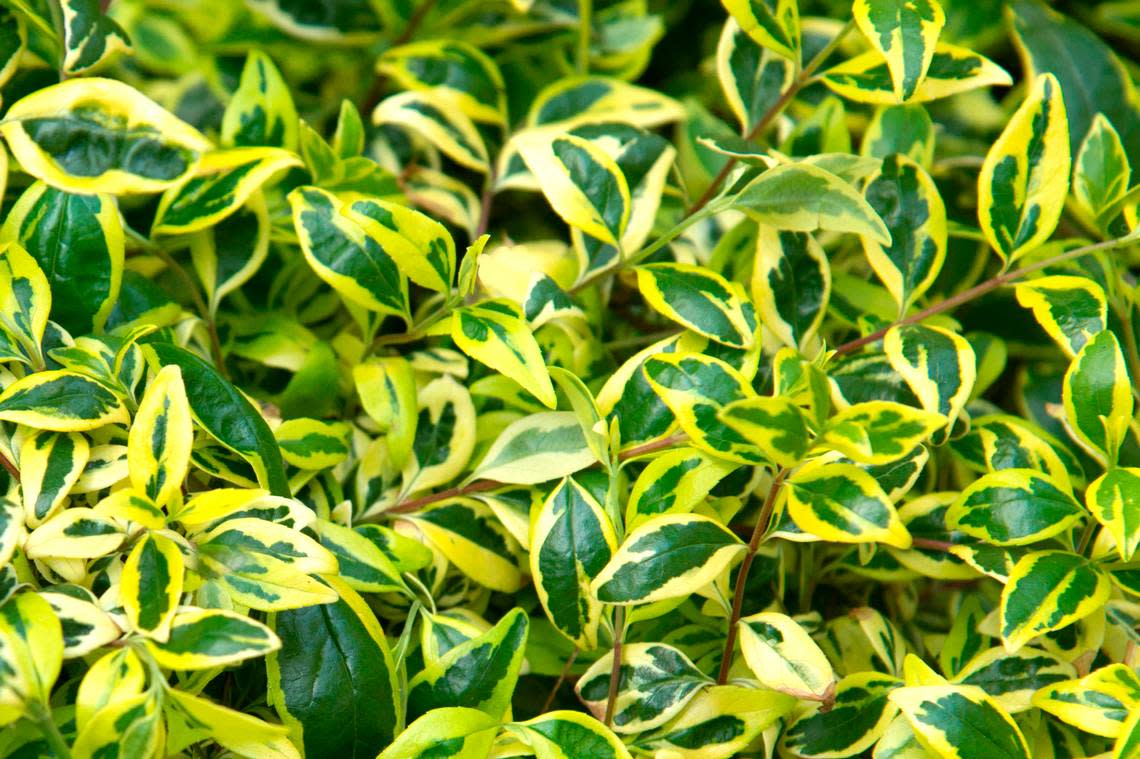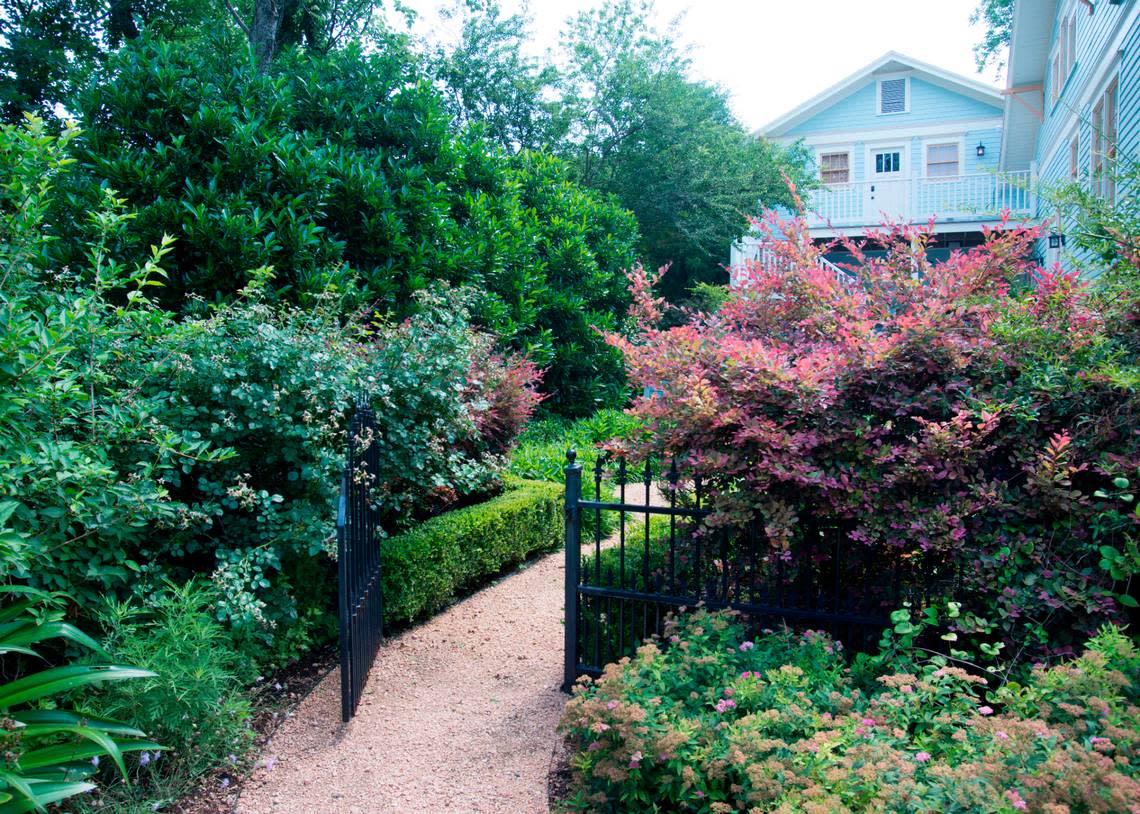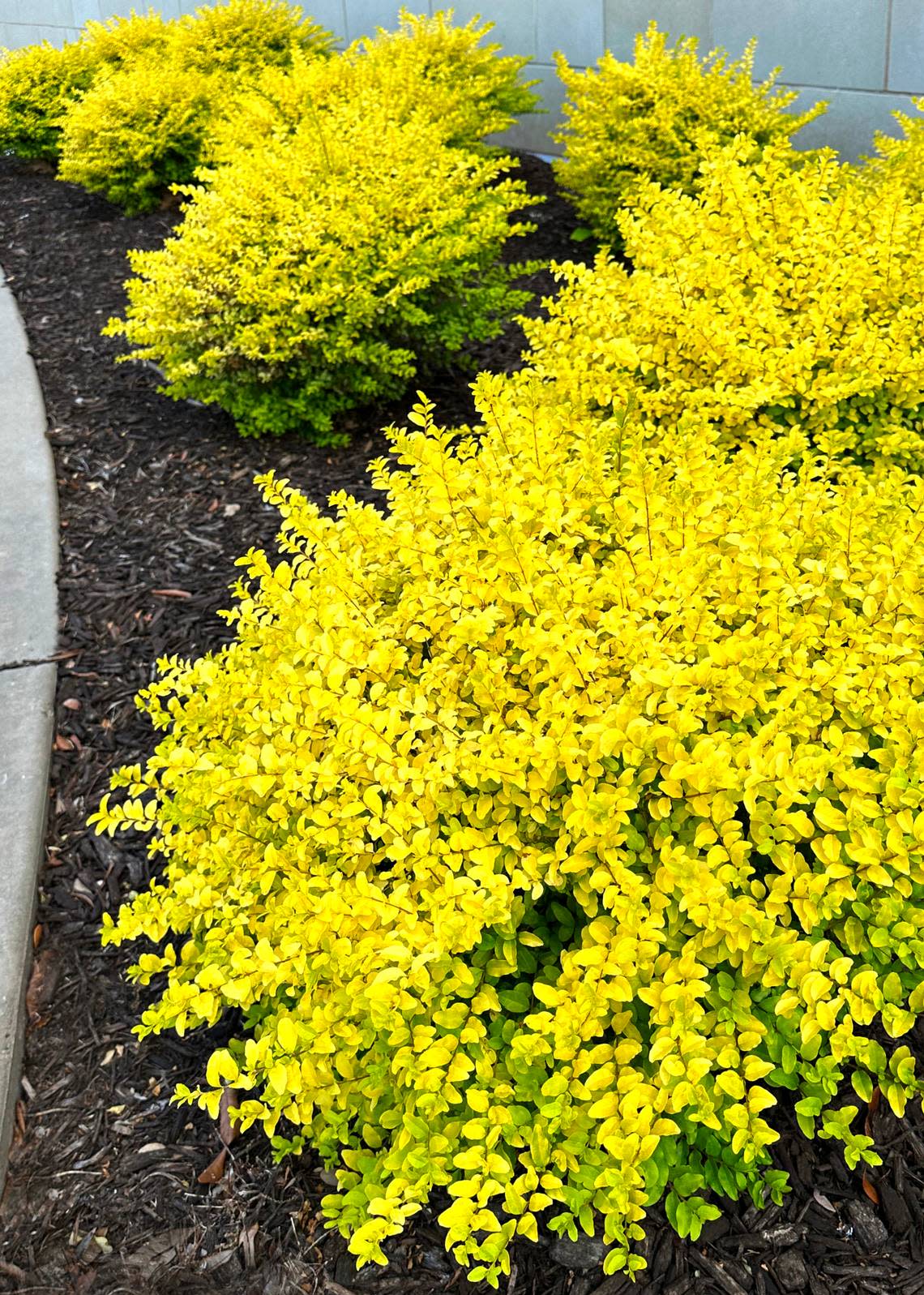Looking for color in your North Texas landscape? Start and end with this one
As I walked into a doctor’s appointment the other day I made mental note of the plants in their landscape. It was a commercial landscape that you might otherwise have thought was reasonably attractive. Beaten by recent winters and droughts just a bit, it is still holding its own for the most part.
But, to the point I’m going to try to make, see if you catch any common thread to the plants. Purple wintercreeper euonymus. Sunshine ligustrums. Twist of Lime abelias. Flirt nandinas. Loropetalums — not sure of the variety. (They all begin to look the same to my tired eyes. I’m kinda worn out by loropetalums in the Blackland.)
Those were the plants that made up that entire landscape. At this time in that landscape there wasn’t a green plant among them. Every plant was either variegated or purple. I felt like I was walking through a big field of living Easter eggs.
When I was a kid down in College Station, I begged my parents to buy a red car or a yellow car. Anything but another blue car. My parents were fabulous. But do you see a college professor and a college librarian buying a red car or a yellow car? Neither did I.

So, I learned that simple, ordinary colors work just fine. And in landscaping I once stopped by the house of an ultimately respected landscape architect. He was a friend of mine — a man who had designed plans for a first lady. I was picking up plans for my own landscape, and I felt like the luckiest guy in the world to get to go to his house to pick them up. As I walked up to his front door, I noticed that every plant in that impeccable garden was green. Light green. Medium green. Dark green. All shades of green. But green. Different leaf sizes and textures, all of them green. It was simple, and it was gorgeous. I’ve never forgotten.
That architect would have trampled me running from the landscape outside that building last week. He would have been horrified. My old axiom is, “The farther you depart from plain basic green, the more dramatic the impact will be.” That said, when it comes to foliage, stick with green leaves, and leave the variegated plants for attention. Much as you do with your flowering plants, it’s fine to use variegated plants. Just don’t over-use them.
Which brings me to another important suggestion. Do a little homework before you go shopping. Or go shopping before you really go shopping. Meaning, spend a few hours browsing several nurseries before you allow yourself to start buying plants for your landscape. Make lists of the plants that you like, then research how large they grow and any special growing needs they may have.

Whenever possible buy from a Texas Certified Nursery professional. Those are highly trained, full-time plant people who are prepared to answer all your gardening questions and advise you on the best plants for your specific locations. You’ll find them at member nurseries of the Texas Nursery and Landscape Association.
If you have trouble finding a particular type of plant that you really want, and if you know it’s the best type for a specific spot, ask if the nursery will be getting any in later this spring. Sometimes they can order them for you. If necessary, just leave a space for later planting. It’s better to do that than to put in a short-term plant of lesser quality that will just have to be replaced in a year or two.
I keep driving one critical message home every few weeks here. New shrubs and trees must be watered by hand for the first couple of years after planting. Drip irrigation and soaker hoses won’t be enough, and landscape sprinklers won’t even come close. Use a water bubbler and a water wand to soak each plant by hand every two or three days from April through mid-October. Let them get too dry just one time and you risk losing them entirely. They need time to send their roots out into the surrounding native soil of your landscape.
I began this ramble by talking about an observation I’d made on someone else’s landscape. I’m going to wrap it up with another piece of judgment that applies to thousands of landscapes across North Central Texas — even my own to some degree.

We’ve had two very bad winters in the past three years. We’ve had two very bad summers in the past two years. It’s been tough to be a plant around these parts recently, and our landscapes do prove it. I was recently looking at photos I took in my landscape eight to 10 years ago, and my goodness, it did look better. I’ve realized the regression for some time. I’ve been working to get things repaired.
At the same time, I’ve seen commercial and residential landscapes that were also devastated, especially by the cold of February 2021. So many landscapes are still out there with torched plants and dead trees. I’m now beginning to wonder how long it’s going to take us to rev up the rototillers and start reworking our landscapes.
This could be a good year. Cool weather and abundant moisture could provide all the impetus we need. Let’s get out and get Texas growing again. This is our chance.
